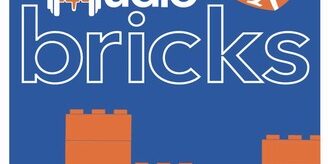Glycolysis


Glycolysis is the first step of metabolism and the biochemical pathway by which glucose is converted into pyruvate. Some cells use glycolysis to make pyruvate to use in other metabolic processes; others, like erythrocytes, rely on glycolysis as their main means of energy production. Because glycolysis is central to energy production, it is tightly regulated by many mechanisms. Metabolites along the glycolytic pathway also regulate other processes in the body. Figure 1 shows the overall pathway of glycolysis with all its intermediates, enzymes, and cofactors. It looks daunting, but don’t worry! We’ll break down all the important components and go through it step by step.
After listening to this Audio Brick, you should be able to:
- Describe the reactions of glycolysis in sequence and know where ATP (adenosine triphosphate) is used and where ATP is made.
- Identify the reactions that are rate-limiting in the pathway.
- Explain the regulation of the pathway with emphasis on the rate-limiting reactions.
- Describe the roles of insulin and glucagon in the regulation of glycolysis and the enzyme targets.
- Explain why glycolysis occurs in all cells, including erythrocytes, and explain the relevance of oxygen availability and mitochondria in terms of the end products of glycolysis.
- Explain 2,3-bisphosphoglycerate and its relevance to glycolysis and the binding of oxygen to hemoglobin.
- Identify the diseases associated with defects in glycolysis, particularly pyruvate kinase defect.
You can also check out the original brick from our Endocrine collection, which is available for free.
Learn more about Rx Bricks by signing up for a free USMLE-Rx account: www.usmle-rx.com
You will get 5 days of full access to our Rx360+ program, including nearly 800 Rx Bricks. After the 5-day period, you will still be able to access over 150 free bricks, including the entire collections for General Microbiology and Cellular and Molecular Biology.
***
If you enjoyed this episode, we’d love for you to leave a review on Apple Podcasts. It helps with our visibility, and the more med students (or future med students) listen to the podcast, the more we can provide to the future physicians of the world.
Follow USMLE-Rx at:
Facebook: www.facebook.com/usmlerx
Blog: www.firstaidteam.com
Twitter: https://twitter.com/firstaidteam
Instagram: https://www.instagram.com/firstaidteam/
YouTube: www.youtube.com/USMLERX
Learn how you can access over 150 of our bricks for FREE: https://usmlerx.wpengine.com/free-bricks/
from our Musculoskeletal, Skin, and Connective Tissue collection, which is available for free.
Learn more about Rx Bricks by signing up for a free USMLE-Rx account: www.usmle-rx.com
You will get 5 days of full access to our Rx360+ program, including nearly 800 Rx Bricks. After the 5-day period, you will still be able to access over 150 free bricks, including the entire collections for General Microbiology and Cellular and Molecular Biology.
